
Francis Qureshi of Red Dot Cameras shoots back with the shop’s demo SL and 35mm Summilux. Taken with the 50mm Apo-Summicron.
When the Leica SL was announced I sat on the fence for a few months, convinced that it was too big and heavy for me — especially when twinned with the 24-90mm Vario-Elmarit zoom. I’d handled both often enough and, after giving up on heavy DSLR kit nearly ten years before, felt that the SL combo was more than I could handle. Ultimately this turned out to be true, but there is much more to the story and I was up for the challenge.
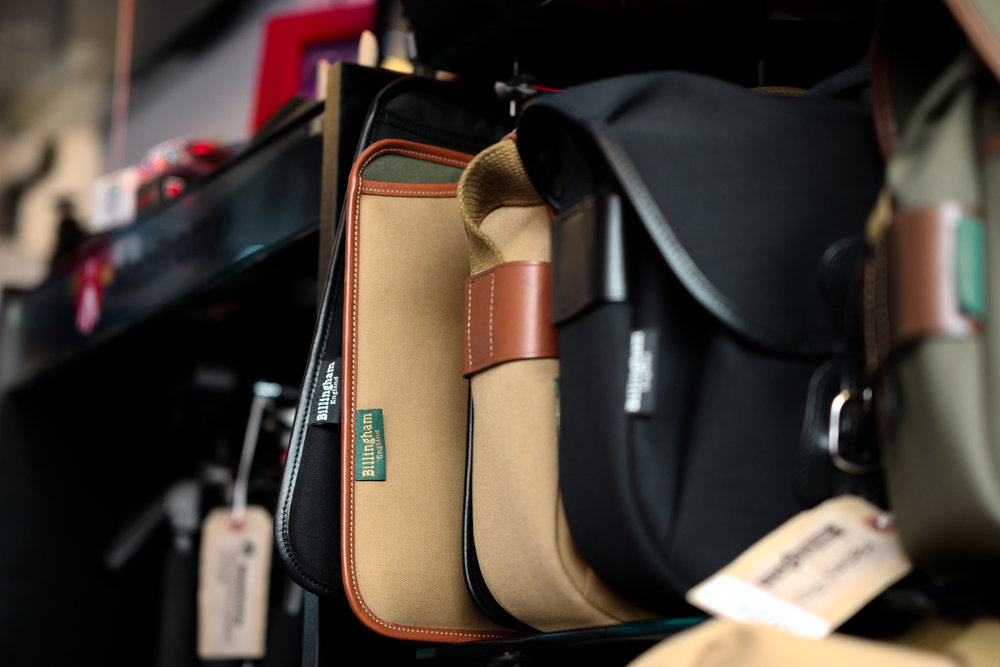
50mm Apo-Summicron at f/2
In the end I bought the SL body with the intention of using it only with M lenses. This it does superbly. It is without doubt the best mirrorless camera to use with your M glass. There are no compromises, and that giant viewfinder makes it really easy to focus manual lenses. It’s even easy without using magnification or other focus aids. (Note I said “mirrorless”. There is one camera that’s better, and that’s a Leica rangefinder.

Kai Elmer Sotto with his well-worn M-P (Leica SL and 50mm Apo-Summicron)
SL versus M10
How does the SL compare in size and weight with the traditional M rangefinder? The body weighs 847g, which is 187g more than the M10. It is taller and generally more bulky. But the comparison is a little more complex. The SL has a substantial built-in grip and the best electronic viewfinder on the market. A grip and the (inferior) viewfinder are accessories for the M10, thus adding to weight and closing the gap a little between the two cameras. But this applies only if you need them. It’s all a matter of how much you value the extra grip, in particular, but the SL does offer a well-rounded and very handleable package. Yet however much I try to rationalise the weight and size differenced between the M and SL, there’s a high degree of subjectivity involved. Whatever the figures say, the SL just feels much of a handful. It is a very substantial camera and no mistake.
Up to yesterday the SL had just one full-frame direct competitor, the Sony A7R II which features a higher-resolution 42MP sensor and a smaller, lighter body (625g compared with the SL’s 847g). As I write this, however, Sony has announced the A9, an upgraded full-frame mirrorless that is perhaps more comparable with the SL and is positioned to take the DSLR market head on. Yet even this camera weighs only 673g, 173g lighter than the Leica.
I haven’t yet had the chance to handle the new A9, but the A7 series cameras are definitely a more complicated to use, with a more fiddlesome menus and small buttons, and they don’t suit everyone. The SL, on the other hand, has a sensible approach to sensor resolution at 24MP (I am not a fan of higher resolutions and the larger resulting storage requirements unless I can see a definite advantage, and I can’t. It’s significant that the A9 makes do with 24MP). It is also the best-built, sturdiest camera I have ever handled. It is indeed built like a tank and, despite the added weight, feels better in the hands than the Sony (in my opinion, that is).
When it comes to competition, though, we should now consider the M10 with its much-improved accessory viewfinder. While unable to offer autofocus, it can match the SL in most respects and is lighter and more compact. It is also nearer to the heart of many Leica owners.
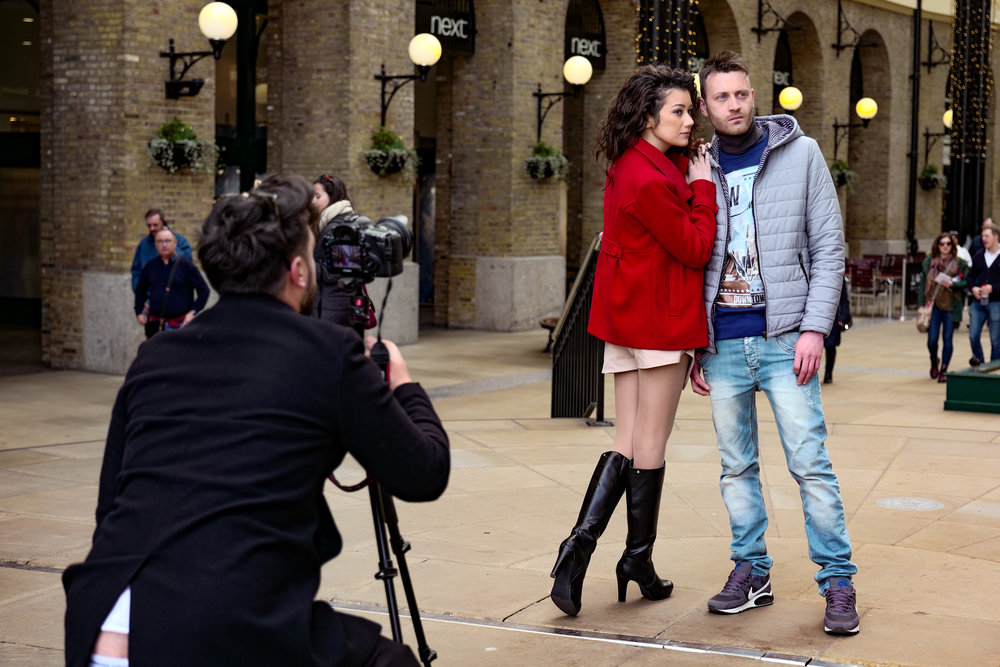
With the 24-90mm Vario-Elmarit-SL
SL handling
I am very happy with the SL’s general handling. Indeed, it is a great camera with a minimal number of buttons — just four big oblong verticals around the screen handle most operational calls. The menu system is simple and easy to navigate, the top-plate information window is a great asset and a model of efficiency— it is similar to that used on the Leica S — and the front and rear soft dials operate precisely, with well-considered options available in the menu. I had, and still have, few complaints. About the only thing I don’t like vis-a-vis the M10 is DSLR-style strap lugs, much preferring the more traditional lug which permits the use of straps equipped with a split-ring connector. But, I suppose, when the weight of the SL lenses is taken into account, Leica has gone for the safer option. It’s a very minor point in any case.
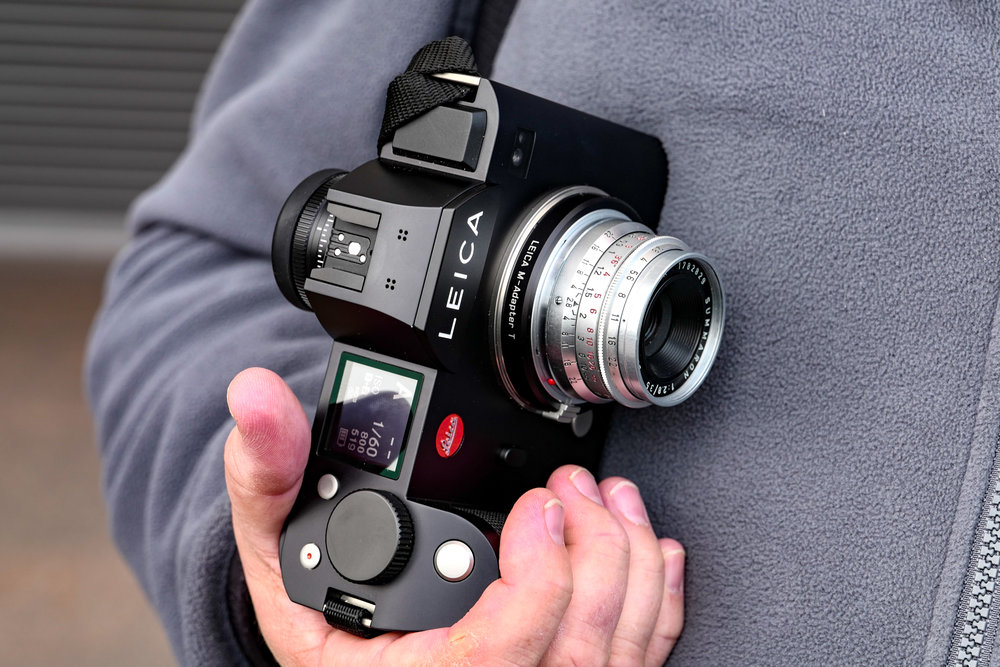
The SL works reliably with almost all M lenses — it’s a no-compromise camera if you like to combine mirrorless with manual lenses (taken with the 24-90mm Vario-Elmarit-SL)
Vario-Elmarit zoom
Somewhere along the way, I persuaded myself to buy the 24-90mm Vario-Elmarit zoom. I grew to love this lens, although the attraction is tinged with reservations on size and weight — it is all of 1.2Kg on the scales. Without doubt, though, this is the sort of zoom that isn’t constantly nagging to be replaced with a bunch of primes. It could certainly be the only lens you really need for the SL; if you have the muscle, that is. Together with the SL body, the combo tips the scales at just over 2Kg, which is well into pro DSLR territory.
A year later and I find myself using the SL less and less often. It is a superb camera which performs exquisitely. It is ideal for events where this first-class zoom lens gives the versatility of both wide-angle shots in confined areas and perfect portraiture at the other end of the scale. You seldom hanker after a prime unless for low-light use or for extreme subject separation.
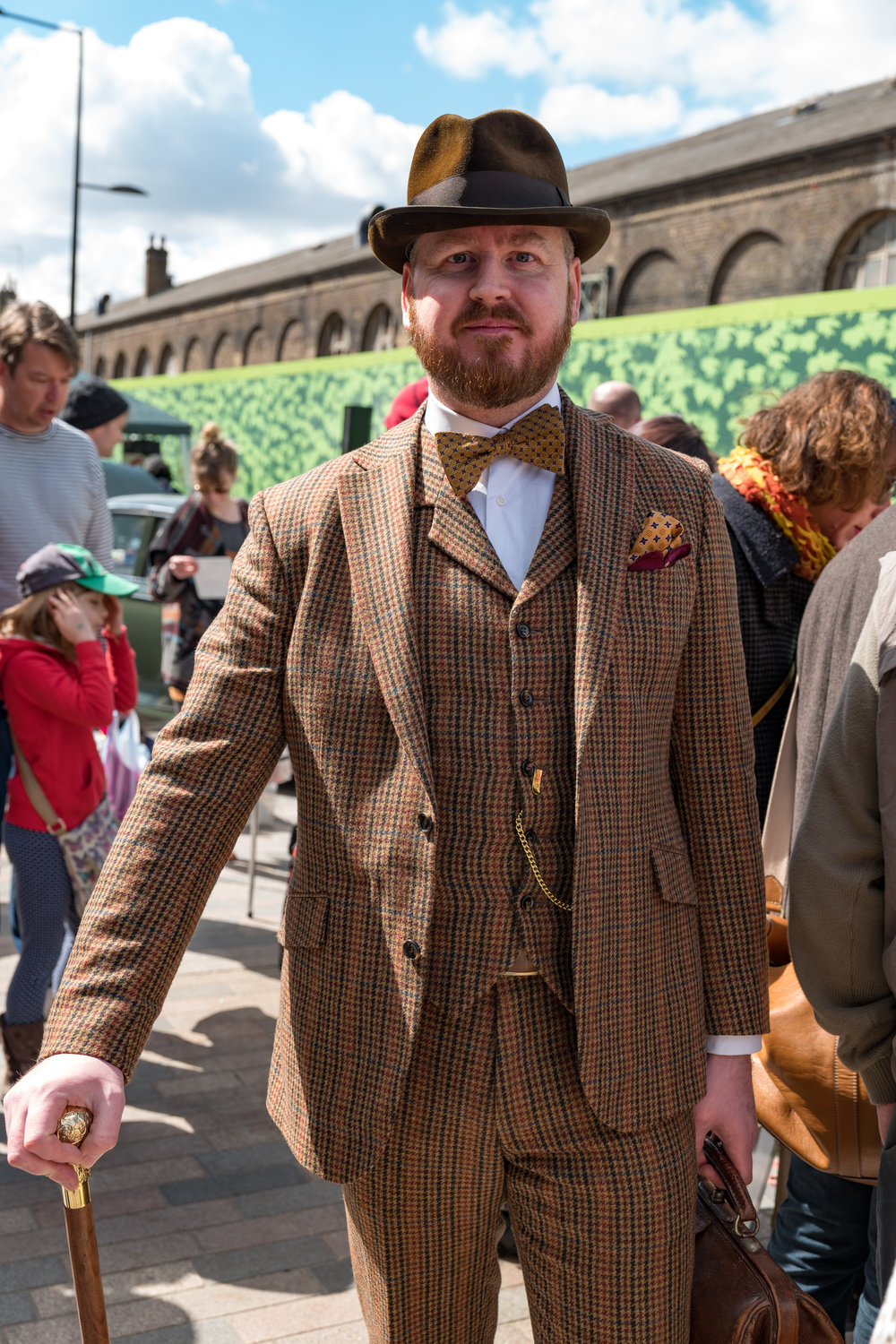
With the 24-90mm Vario-Elmarit-SL, a suberb and versatile lens for events such as this Classic Car Show which attracts many period dressers.
Pros and cons
I’ve discussed the pros and cons of the SL with a number of friends who own or have owned the camera. All have the same reservations about weight, particularly the heavy zoom lenses. Yet we all agree that if you expect the best performance in an auto-focus zoom, the weight is something that has to be borne. On the other hand, we know that the best M primes can perform just as well if not better and offer a great weight saving. You’re just not getting auto-focus, that’s all.
Never have I owned a camera which I like so much but use so little. Weight, weight, weight. It all comes down to weight. And this, unfortunately, has been the constant refrain during my ownership of the beast.
Now you might not mind this so much. After all, a similar pro rig from Canon or Nikon is likely to be more bulky and even heavier. If you can cope with the weight, then I will recommend the SL and its medium-range zoom wholeheartedly.
But for many people, especially older photographers who have done their time with big DSLR outfits and decided to downsize, the SL with its native lenses has a fair measure of déjà vu about it. However, as I said, these selfsame photographers could decide that the SL body goes well with M lenses and the weight penalty in this case is less noticeable, but not entirely unnoticeable.
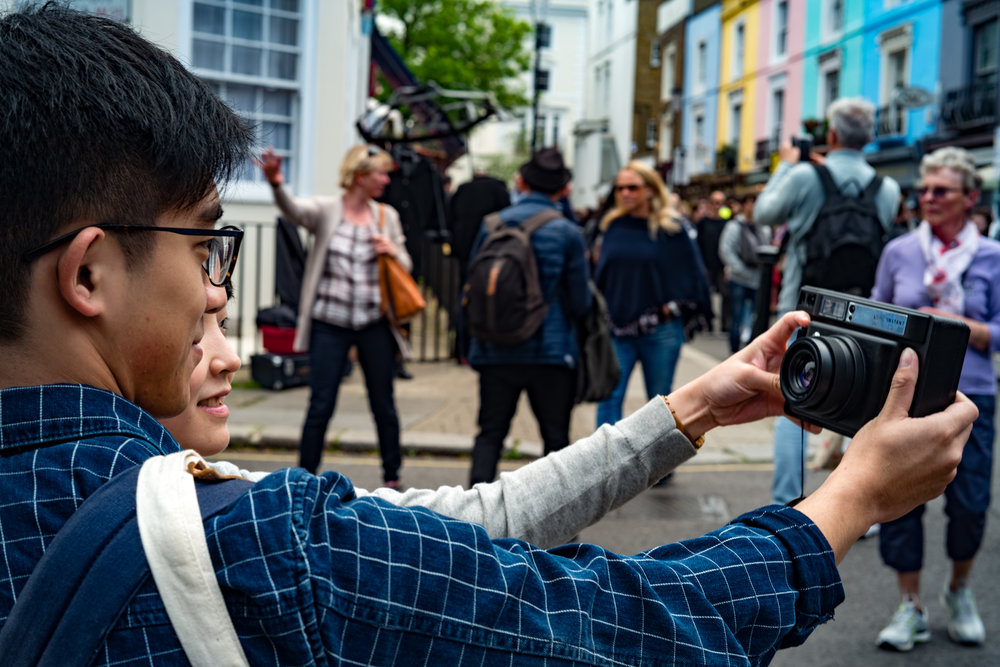
Above and below: Something different — the SL with the 50mm Zeiss Sonnar f/1.5. This is a lens that has a reputation for focus shift on the rangefinder and is perhaps easier to manage with the SL’s WYSIWYG finder.
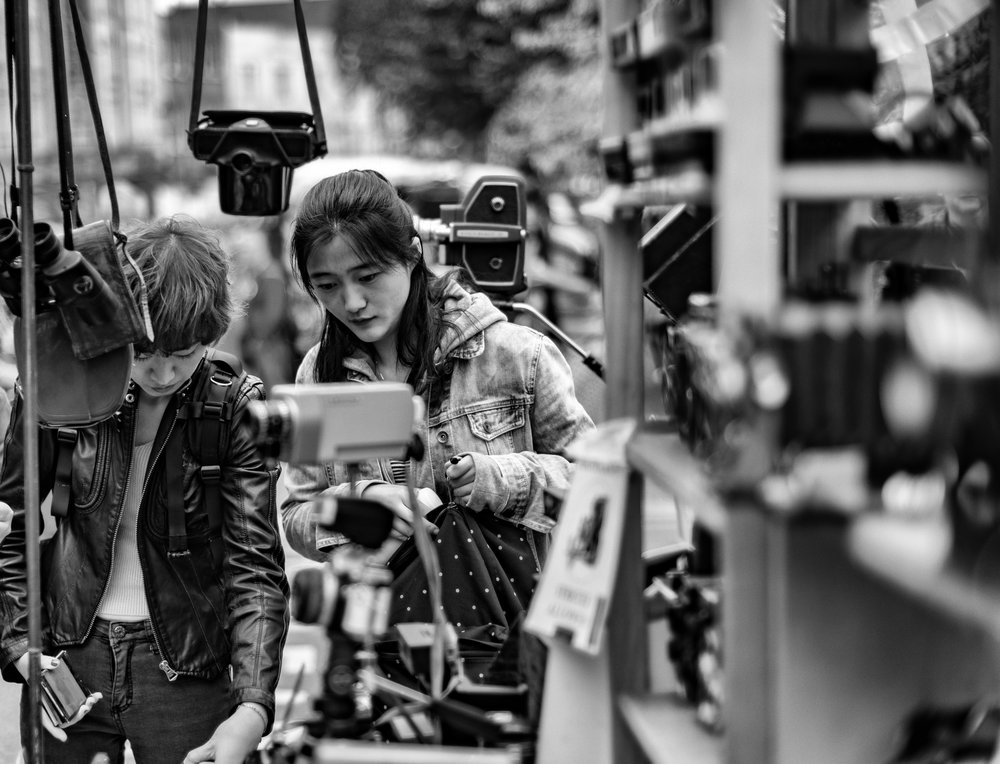
Where the M10 scores
So, back to the arrival of the M10. This new camera produces results on par with the SL; the image quality is very similar and I can’t really say that I have a preference on way or the other. In common with many people, I have wondered whether the M10 could replace the SL. Add the Visoflex into the equation and the M10 offers similar capabilities to the SL, although the Visoflex screen is smaller than that in the SL’s finder. But it works, especially if it is used only for lenses that really benefit from an EVF — including wide-angle, R zooms or “difficult” lenses such as the Noctilux. Ultimately, the advantage of the M10 is that for most of the time you are using the rangefinder and enjoying the smaller body and lower weight.
There is also one area where the M10’s Visoflex beats the SL’s finder and that’s when it comes to the magnification focus aid. With the SL, as with all true mirrorless cameras, it is necessary to prod a button — more than likely you’d choose the joystick — to initiate magnification before every shot. This can become a nuisance and it is one reason why many SL owners prefer to work without magnification. Thanks to the size of the screen, this is a more comfortable option than it is with most built-in EVFs.
The M10, on the other hand, offers the option of automatic magnification when using the Visoflex. As soon as the focus tab is nudged the display automatically shows a magnified image. You might not like this — you can turn it off of course — but I love it. With the M10, the mechanical rangefinder linkage is used to activate this automated magnification. In this, the M is unique.
After I got my hands on the M10 I realised that I really enjoy using it — more so, in fact, than the SL. I began to question whether it was worth continuing with the SL when I really prefer the rangefinder experience. Despite the SL’s competence with manual lenses, I still prefer the real thing.
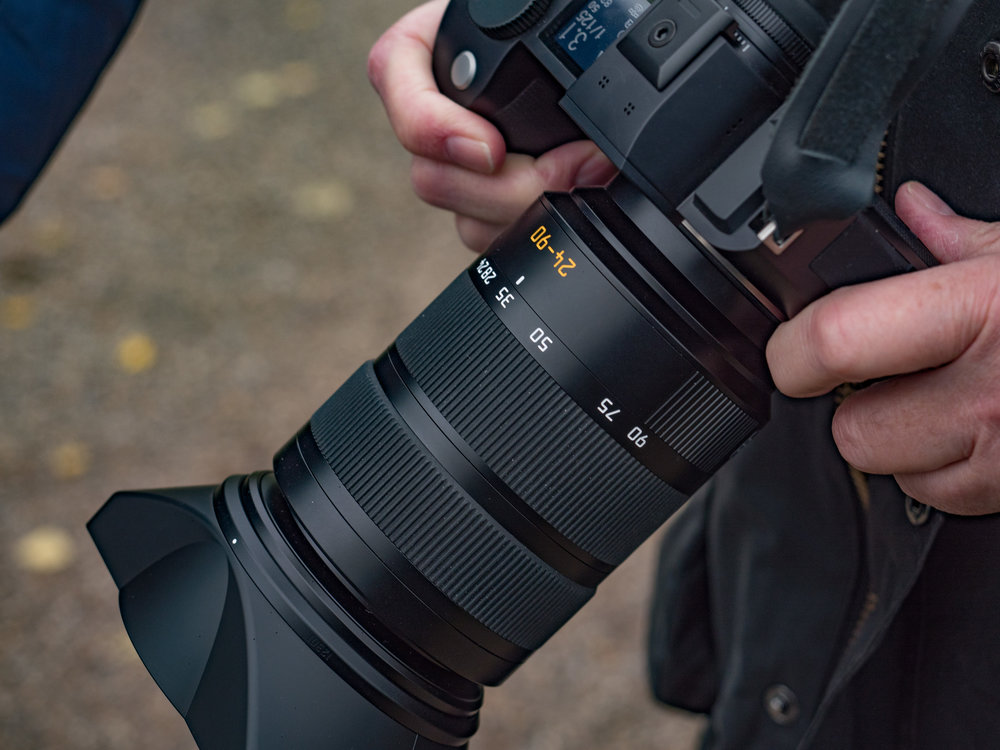
Superb performance, industrial strength build, world’s best EVF, perfect zoom range of 24-90mm. But could you carry this lot around with you every day? This shot was taken not with an SL but with a Panasonic Lumix GX8 and the Olympus 12-40mm zoom.
Indecision
Several times in the past few months I have been tempted to sell the SL. Last week I even got as far as packing the Vario-Elmarit in its box and removing the strap from the camera body prior to resetting and boxing up. But I couldn’t go through with it at the time. There is just something about this camera that screams “keep me”. I can’t put my finger on it, but switch it on, peer through that wonderful viewfinder and old enthusiasms are renewed. It feels right in the hands and the controls are addictive and perfectly arranged.
I decided to give the mirrorless outfit another innings and an Easter break in East Anglia provided the ideal opportunity. I saw it as my last-ditch opportunity to bond with the SL. To make it lighter, I left the 24-90mm at home and decked it out with the the versatile Tri-Elmar-M which I have been using a lot on the M10 (see my feature on Lacock Abbey). Actually, the Tri-Elmar works well in the role of lightweight zoom for the SL.
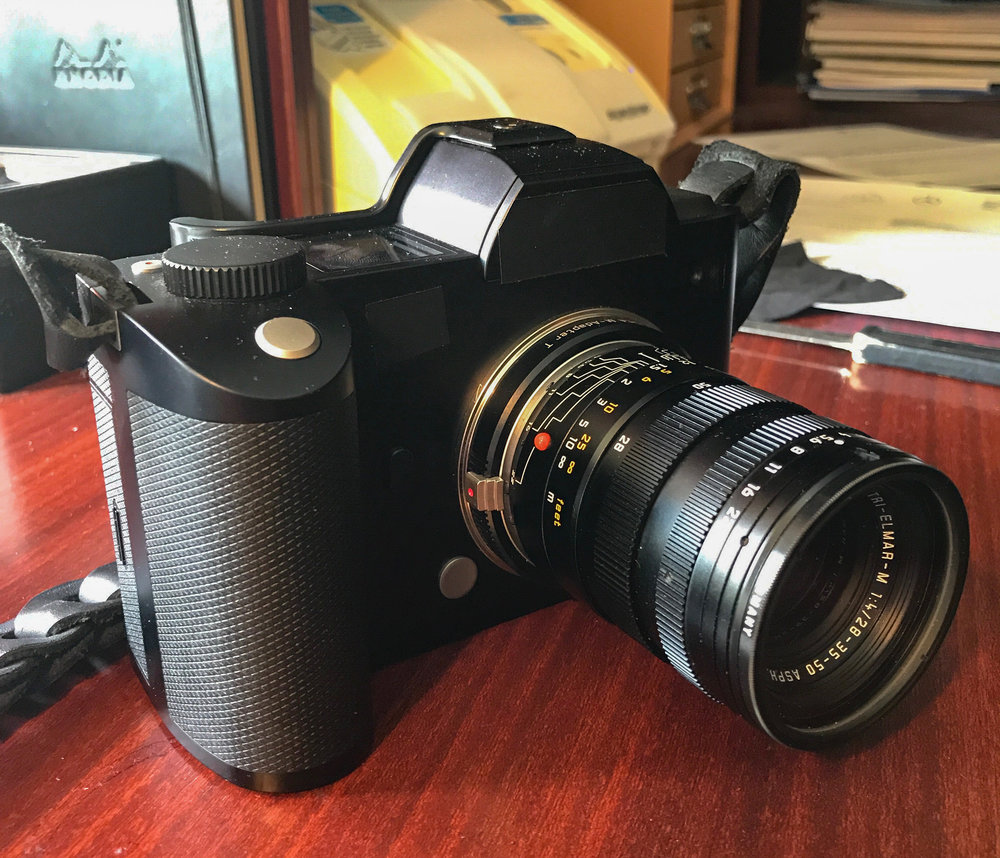
My SL lightened considerably with the mini M-zoom, the Leica Tri-Elmar which offers three discrete focal lengths of 28, 35 and 50mm. This is a rig that makes sense from a size and weight point of view. (iPhone 7 Plus)
Admittedly, the 28-35-50 fixed focal lengths are nowhere near as versatile as the Vario-Elmarit-SL’s 24-90mm range. But it works well on the SL as a walk-around lens. Together with the T-M adaptor, it weighs 440g — that’s a third of the weight of the Vario-Elmarit — and produces a mini-zoom outfit weighing under 1,300g. It’s still quite a lump, though.
Despite my good intentions, at some stage during the weekend I began to notice the weight of the SL around my neck. Even with the relatively lightweight Tri-Elmar, the SL rig heavy. I found my upper back muscles straining and in the end I just didn’t want to carry it around and I was forced to take drastic measures.
Lightweight choice
I left the SL in the car and, instead, slipped the Ricoh GR into my pocket. Of course there is no real comparison; the Ricoh is a fixed 28mm pocket camera with an APS-C sensor. And it doesn’t even have a viewfinder; least of all, one to compete in size with the Leica’s. The SL, with its full-frame sensor and M glass, is clearly in a different league. But the Ricoh is a joy to carry and, within its limitations, the results are never disappointing. I knew that if I had had the M10 and Tri-Elmar with me I would have been much happier to tote that combination all day, as I have done on many days over the past month. The reserve Ricoh would have stayed in the bag, where it always sits in case of emergency.
I returned home full of indecision. I cannot see the SL as the sort of camera I wish to carry often. It is too heavy for me, even with M lenses, but I stress again that this is a purely personal view and you do need to try it for yourself.
The M10 just that bit lighter which makes it much more appealing as a camera for everyday use. And I confess that when push comes to shove I prefer the rangefinder experience to using an EVF — for manual lenses, that is — however good it is. If I do need an electronic viewfinder, the M10’s Visoflex, while inferior to the SL’s unit, is more than adequate. Above all, with the M10 you will spend most of your time using the rangefinder and do not need accessories to add to weight or bulk. So far, after a month with the M10, the Visoflex has not been out of its little leather pouch and I haven’t felt the need to buy the accessory grip.
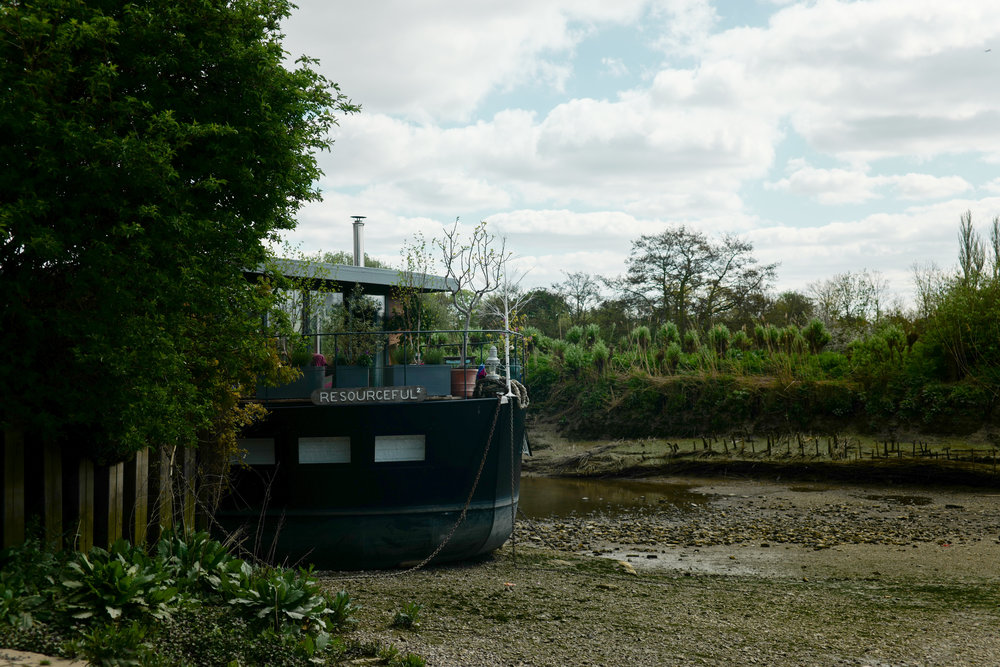
Resourceful combo: The SL with the Tri-Elmar-M lens at 28mm
Regret likely
I suspect that I might regret selling the SL. If only I could accept the added weight then the this would be my type of camera. If you are not so bothered about those extra ounces, you will not be disappointed. I have several friends who remain firm fans of the SL and, perhaps if I were a little younger or more willing to hump around a lot of gear, then I would probably feel the same. The great pity is that the 24-90mm zoom is so good and yet so heavy. Even if I do keep the SL, I cannot see me using the zoom except on very special occasions.
Lots of ifs and buts here. But for the time being I continue to sit on the fence. I really love the camera and that’s why I find it so difficult to part.
__________________

Just reading this old post, Mike. I bought a new SL a few months back; Leica offered a fabulous trade-in deal which reduced the price significantly. Like you, I’m a real fan of the Ms (currently an M-D) and I procrastinated before buying the SL because of its weight, especially with native primes. But I’ve found that the excellent leather SL strap by Rock n Roll Straps (which has a certain amount of give) really helps to take the weight. It’s quite amazing the difference a good strap can make! I also favour the impressive Sigma 45mm L Mount f/2.8 lens for those occasions when I want to reduce the weight still further. Happy New Year.
It sounds like a good outfit. That 45mm lens is a winner and transforms the SL in terms of weight and handling. Let’s face it, most time f/2.8 is all we need and, while it isn’t optically as wonderful as the Leica, Panasonic and Sigma ultra-fast primes, it offers wonderful all-round experience.
As you see from this post, I was in and out of the SL and would probably have bought another at the reduced price if it hadn’t been for the arrival of the SL2.
Hi Mike, I have read this post like 5 times, focusing on the pros and cons section. Those are really truthful struggles. I am an MP-240 user since 2017. I own only M lenses. I last touched and used someone’s SL with the Leica 24-90 in November 2018. It was just a few trial shots. I am just puzzled how the 187g felt so much heavier than the MP-240. Maybe it was the size giving the perceived weight?
Did I read in your last reply in Jan 2020 that you have sold your Leica SL and the 24-90?
I don’t shoot often, probably for overseas street photography trips. There is a used SL at a very good price now and I had thoughts of replacing the MP-240 with the SL. Again, I only own M lenses. I have a cheap Third Party M-TL adaptor.
Yes I did sell the SL (for the second time) and also the 24-90 ( which I now regret). When the SL2 arrived I had a play and, for some reason, it felt so much better than the SL and also looks better. Although it is actually a bit heavier than the original, it actually feels lighter. Maybe the more finger-friendly grip helps. So I bought the SL2 and am delighted with it. I have no SL lenses, just the 45mm sigma which is light and compact —oh, and the Panasonic 24-105 kit zoom. It isn’t in the same class as the 24-90 but it is lighter, very much cheaper and more compact. For its price it does well.
In answer to you question, though, a used SL at current prices is a sensible buy.
Mike, the selection of a camera system is highly subjective and for me, part of the enjoyment of photography is using a variety of equipment….from the M3/4 to the Nikon F4 to the Leica SL. (yes, I still shoot film). To mitigate the weight (haptic) concerns when using the SL and 24-90, I am using a thumbs up (it appears you may be as well), a RRS base plate with a base clamp attached to a Black Rapid strap. The camera and lens are tucked beside my right hip when at rest. I’ve found this to be the best arrangement for both me and the camera/lens.
As for the SL itself, it has proven to be a superb companion with regard to using manual focus lenses. Most of the lenses I use are prime, manual focus, vintage and new. They include Nikon, Leica M, Zeiss, and Voitlander. I have not found a better experience, when using these lenses, on any other camera, including the Sony A-7 series (awesome in many ways) and an M-P 240. The rangefinder experience is like no other, but to my 58 year-old eyes it can sometimes be a challenge. The SL for me is a game-changer in this regard.
Thank you for an insightful article.
Tom, thank you for all this useful background. Yes I have the thumb grip and it certainly helps. I haven’t tried the Black Rapid strap (although I have one somewhere).
You are right that using a variety of cameras adds to the whole experience. I sometimes envy those people who have just one camera and are happy. I have to say, though, that Macfilos would be a boring blog if I were banging on about the same old camera every time.
I can see a wealth of talent and interest in, say Micro Four-Thirds just as I can in the SL or M. Everything has its place and it is fun to have a complete change. I tend to have M weeks, GX8 weeks and even Ricoh weeks. It’s always exciting to get back to another familiar system.
Mike
Re the M10 choice I too thought I would buy myself one and guessed it would involve a long wait, but I rang a certain London dpecialist dealer, who I know is a good friend of yours Mike, and asked what the score was. He was in fact quite rude and dismissive amidst telling me I should not bother as it would take at least eight months.
Anyway I then rang Leica London instead, but this time only managed to get a recorded message telling me how important I was to them, but everybody was busy and so would I kindly to leave a message with my contact details and someone would soon get back to me quite soon. I did but no one ever got back to me so I tried again several more times with exactly the same results over several more weeks.
The last message I left them me. Was please cancel my M10 order I have not managed to make, and please do not get back to me either when you finally have a shop full as I am about to buy a Fuji X-Pro instead, and you know what. I not only think the Fuji is fantastic but I have saved myself thousands of pounds. Cant be bad!
That’s a sorry tale, Don, and I will mention it in appropriate quarters. Fuji has more or less won the APS-C battle among enthusiastic amateurs and many professionals. I understand what you say. It’s a great pity because there isn’t much real competition out there. If we discount Canon’s efforts, which have not been too successful, about the only realistic competitor for Fuji in the mirrorless APS-C market is Sony. I am hoping that Leica can bring some more muscle to the T system. After all, the lenses are fine, it’s just the lack of a built-in viewfinder that holds it back.
Buy a Fuji X-Pro 2 instead. I have and it too works brilliantly with my M lenses, but I shall of course keep my M9. Don
Don, Indeed and as Bill Palmer and William Fagan keep telling me. I got out of Fuji last year, not because I don’t like them — I do — but because Bill in particular is our resident Fuji guru who writes extensively (and glowingly) about the cameras and equipment. Instead, I’ve tarried with micro four-thirds and like the system. I’m also just about to pay a return visit to the Leica T since there are strong rumours of an upgraded TL with viewfinder, something that will put new life into the system. I know you like the T also.
Mike
Third attempt to post this morning! The site has gone down on me twice already, so third time lucky? I gave up on large cameras when I left Nikon for Leica. I still keep some Nikon gear, but largely only as a collector, and I intend to add the historically important Nikon F to my collection. I still have a D800E but I never use it. I have a large collection of vintage Leica cameras and I have an M240 as a user and an M10 on order. I could be regarded as a ‘Leica fan’ but no amount of ‘brand loyalty’ could persuade me to buy the SL. It is too big and awkward for my needs. I also have some Fuji gear which will give a lot of versatility and superb handling in a lightweight package. The IQ is less good than the M240, but the versatility and handling of the Fuji gear is as good as I have experienced on any digital camera, probably the best if truth be told.
I asked about SL market penetration at the Leica Society day in Mayfair last November, but did not get a useful answer. The waiting lists for the SL never seem to have been as great as those for the M10.
William
All of the emphasis on weight is ridiculous! This is my dream camera. I don’t care what it weighs but it’s not really that much more than my old all-metal Leica M’s with a Noctilux. I can carry it with the 24-90 all day for a month and have. I’m a 71 year old woman!! As far as I’m concerned the SL is definitely a keeper. I get the photos I want with it.
I did try to be fair to the SL and if you are happy with the SL and 24-90 then you have a brilliant camera and I’m sure you are getting the pictures you want. Nevertheless, many people do have concerns about the weight and bulk so, again, it all boils down to personal choice and preference.
I share your opinion, Mike. The SL is a great camera, concept wise, but it’s design, size and weight is a failure, IMHO. I never owned an SL, but used rented ones a few times to see that it has a great viewfinder and a built quality that is second to none. But…
Like you I said good-bye to heavy DSLR equipment a few years ago, because I was sick and tired of lugging around heavy equipment. When looking at SL lenses, the 24-90mm and even worse, the 50mm Summilux, I have to say that this design policy Leica propagates will keep me from buying the SL.
My main image making tool is the Leica M-P(240) and Leica M lenses. When comparing the 50mm M Summilux to the SL counterpart, I cannot understand what was going on in the brains of the designers at Leica Camera. The SL would have been a great companion for the M-P, but the trouble is that I hate backpains. So the Fuji X-Pro2 made it instead of the SL. With Leica M lens adapters the X-Pro2 serves me extremely well, it is lightweight, well built, has great native lenses, reat image quality and it is small and unobtrusive.
"Small is beautiful, big and heavy is ugly." At least thats my opinion concerning cameras. Now that there are no more mirrors in the camera, lenses can be made significantly smaller than in the (D)SLR era.
Yes, it’s a camera you really want to like and it performs flawlessly. But….
Hi Mike, I rented SL from leica for a weekend but never took more than 5 pictures to be honest. Yes the vf was nice, colours looked good with my nifty sonnar but it felt like brick and I didn’t like the ergonomics. For me , anything larger than my a7ii, I won’t bother. I have been looking at a good deal on a slightly used m-d 262 at the moment which is about £2k less than M10.
Im of the same mind Mike, after owning the SL and 24-90 zoom found it was just too big and heavy.
Great to have the M10 and feeling creative again.
I certainly achieved some great images with the SL but happy once again to be shooting with the M it just feels right.
I found myself thinking, Mike, you seem to get our of the SL what I enjoy with the X-vario! And you know all about that, so further comment would be superfluous. I enjoyed the article though.
A good point….. The X Vario is capable of some wonderful results and has a remarkable lens which offers much of the versatility of the 24-90 on the SL. Horses for courses….
I recognise all of this in my dilemma over selling by big Cannon EOS 1Ds MkIV and EF-S lenses and buying an XT-2 in its place. The XT-2 is a very fine piece of kit, and while I don’t miss carting around the weight of the Cannon kit in my mid 60s, I still feel pangs of regret for the loss of the feel of the big cannon body in my hands. Irrational, but telling about the fine lines between our choices of excellent equipment.
I recently lent my V-Lux to a friend who was very impressed by its versatility, but said he could never buy a camera that felt so ‘tacky’. I said I bought it simply for its all round versatility and reasonably high spec performance and was unconcerned by its plastic construction.
I guess the SL, which is clearly a superb piece of kit, has some powerful competitors now that Fuji and other manufacturers are bringing out medium format mirror-less cameras for under £10,000.
David
It is a constant dilemma and I think you made a good choice with the Fuji X system. I know Bill Palmer swears by Fuji and doesn’t have any regrets about not having a full-frame sensor. Similarly four-thirds and, even, the 1in sensor in your V-Lux, produce superb results these days. For publication on a web site such as Macfilos (which is where I used most of my photographs) it doesn’t really matter what sensor size you use. The new Fuji and Hasselblad MF cameras do add another dimension, but the lenses and the general system weight count against them in my book.
Mike, you face a typical and recurring dilemma. However you are well-blessed by years of experience in upgrading cameras, all of which should inform your current indecision.
The main reasons you are holding back are nostalgia brand loyalty and similar unquantifiable forces. Be bold. Once you are sure that the M10 (and Q and other compacts in your possession) will deliver results of the necessary quality consistently, while being pleasant and manageable on trips out and about, sell the SL and stop looking backwards.
Live to make the most of what you have. And enjoy your photography.
David, of course you are right. The SL is a great camera but I have to accept that it is for people who don’t mind the weight. I’ve been playing with micro four-thirds and, of course, the M10. I also plan to take a new look at APS-C in the form of the Leica T. I didn’t care for it much to begin with, but clearly Leica will be devoting more attention to it and I believe they will soon have a better camera to tempt us. The problem with full-frame and medium-format is that the best autofocus lenses are enormous and heavy. So one of the smaller formats seems to be indicated for zoom capability and general travel. As you know, the D-Lux is quite a camera despite the four-thirds sensor.
Thanks Mike, I very nearly bought an SL body to use in the same way as commenter Ishrath has done, but in the end as you know, went for the M-P (type 240)…
Odd thing though, I seem to be going out with just an Olympus XA at the moment. Which further to your piece yesterday, is slightly smaller than that Panasonic, but it has a fixed 35mm f2.8 sharp lens, a rangefinder, a full frame sensor, and only knocked me for £75…. Just about to process my first few rolls.
Meanwhile other manufacturers offer similar devices that are also less of a physical burden, Fuji for instance have the XT2, much more compact, as well as less expensive… You mention Sony, and who can say…. you never know… Leica might have a TL that people want to buy. I am really interested in such a device, I even quite like the weird iPhoney type of operating system of the earlier models.
Lighter weight and smaller accessories (spare lenses etc.) make for an easier second system to own.
Yes, agree with all that. I am taking a new look at the T system on the basis that it is clearly under development again. With the T and SL sharing the same mount, there is less danger of the T lens range being orphaned. I’m hoping the new TL with rangefinder will answer many of the criticisms and produce an APS-C system that is worth having. I’m arranging to borrow a T — the original — to see what I can make of it.
Hi Mike ,
I can agree with everything that you have said so eloquently ,as I also have been through the same thought process . I don’t own an M10 (yet) but I thoroughly enjoy the SL experience and quality of output. I also started with the Leica M primes left over from the M240 and added a 24-90 zoom after 6 months. A monster of a lens but close to perfection. My decision was to keep the SL ,and mainly use the primes and take out the zoom for the walk around expeditions.
Best of both worlds. . The SL albeit its weight is a special camera 👌
I think we agree on the SL, Ishrath. And that 24-90 is truly something special. It’s just too big for me, as an older person, and that’s a great pity. It will be interesting to see what you think of the M10 when you eventually get it. At the moment I am still sitting on the SL fence.
Mike